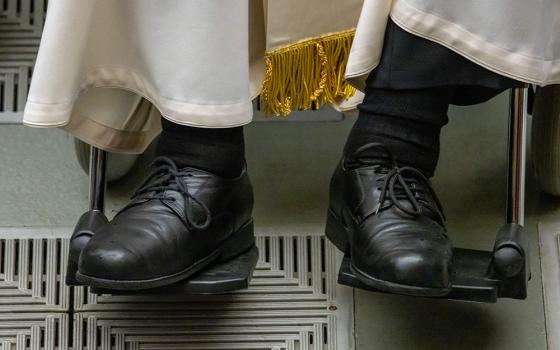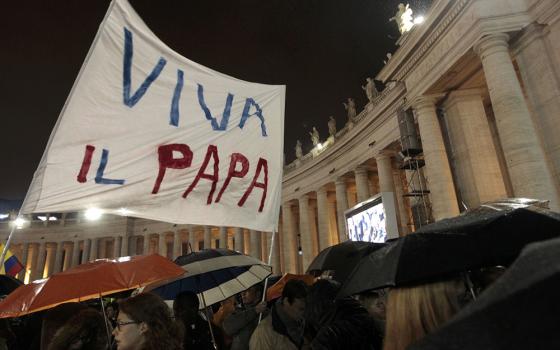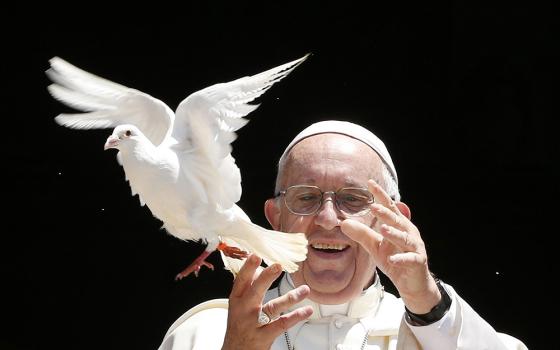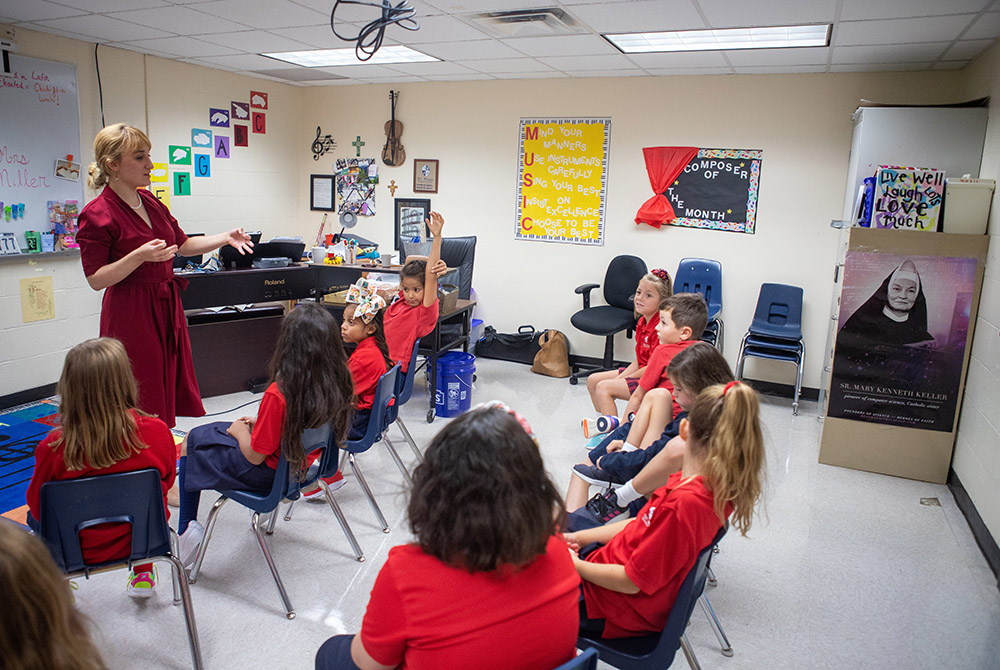
Megan Miller, a music teacher and orchestra director, teaches during an August 2019 class at St. Mary Catholic School in League City, Texas. (CNS/Texas Catholic Herald/James Ramos)
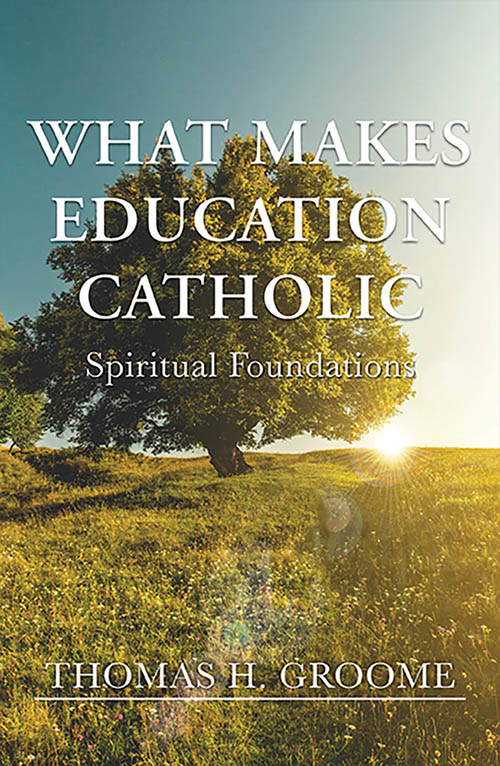
Before my first year teaching in the Alliance for Catholic Education (ACE) program at the University of Notre Dame in Indiana, my community of seven teachers in Jacksonville, Florida, were asked to select a Bible verse to serve as a motto for the year.
Most communities chose upbeat and inspiring passages. Uncomfortable with messages that seemed tailor-made for a cheesy motivational poster, I suggested something a little different: "Not many of you should become teachers, my brothers, for you realize that we will be judged more strictly, for we all fall short in many respects" (James 3:1).
While my community thought this was a superb idea, ACE administrators strongly encouraged us to revise our choice.
With that memory 13 years in the rearview mirror, I chuckled to see Thomas Groome, professor of theology at my undergraduate alma mater, Boston College, preface the first chapter of What Makes Education Catholic with the same verse. Groome's book is a sweeping theological study of Catholic education and begins with a fascinating question, one that helps explain why all teachers "fall short in many respects."
Jesus is frequently referred to as rabbi, or teacher. So any study of Christian or Catholic education must start by asking, "How did Jesus teach?"
Groome laments that pitifully little has been written about this. Jesus first began, he asserts, "by focusing attention on some instance of people's own situation or concern or experience," next by teaching through actions rather than words, and finally by inviting his students to follow and share in this teaching mission.
One of the challenges of teaching is building individual relationships with students while also fostering a nurturing and safe environment for students to ask questions of their own.
Like most good teachers, Groome is at his best when asking, rather than answering, questions. In his second chapter, the author lays out a doozy: Is faith-based education even plausible in our postmodern context?
From here, Groome makes the compelling case that education is ultimately based on hope, and hope — at least for a Christian — is ultimately rooted in the resurrection of Jesus. While I don't recall Groome ever using the word "apologetics" in his book, his page-length treatise on the believability of Jesus' resurrection is apologetic gold. As I teach my students, the entire truth of Christianity comes down to the resurrection. As the apostle Paul wrote in 1 Corinthians 15:14, "If Christ has not been raised, your faith is vain."
Just as Christian hope ultimately hinges on the Resurrection, so does the hope that drives educators to mold the minds of future generations.
Groome next embarks on a sweeping survey of Christian and Catholic history, beginning with Tertullian's humdinger: "What has Athens to do with Jerusalem?" Can faith and reason coexist, complement and support each other?
The answer came out in the affirmative, perhaps best exemplified by St. Anselm's maxim — "faith seeking understanding" — and in the writings of St. Augustine, who had much to say about education. Augustine was among the first to observe that education relied primarily on the interests and curiosity of the student, and held the then-revolutionary idea that corporal punishment was out of bounds.
Next come the heroic monastic figures of the Middle Ages who preserved the wisdom of previous generations for the future, keeping the lights on during what Groome insists on continuing to call the Dark Ages. Despite this and a few other oversimplifications, Groome clearly recognizes the indebtedness of Western education to the institution of the medieval church.
Advertisement
This debt is most obvious when looking at the origins of the earliest universities in Europe, all of which operated under papal charter. Groome's section on the foremost product of these universities, Thomas Aquinas, is an excellent answer to some Catholics who might think him dull or didactic.
Groome shows his Boston College colors in the fifth chapter, calling the Jesuit tradition "the epitome of Catholic education."
For Ignatius of Loyola, "education is ultimately about saving souls." Groome's description of Ignatius' pedagogy will be helpful to any teacher who wants to drive their students' thinking further, in Catholic schools or otherwise. The importance of asking good questions, of encouraging students to consider all sides, make a judgment and then act on it.
Groome's chapter on Angela Merici and Mary Ward is also superb. I had only heard of Merici, and am embarrassed to say I was reading about Ward for the very first time. Both women circumvented prohibitions laid down by the Council of Trent to educate young men and women in a manner that would come to be seen as prophetic.
Perhaps because I am a historian by education, my primary complaint with this book is that it does not include any footnotes or endnotes. Too many assertions begin with a variation on the phrase, "It is commonly agreed ..." or "Scholars agree ..."
Groome frequently cites the work of contemporary Canadian philosopher Charles Taylor, but Taylor's name does not even appear in the select bibliography in the back of the book. A work of this breadth and ambition should allow readers to follow the author through its sources.
Another struggle I felt reading this book was that while I could easily put Groome's reflections and recommendations into practice in my classroom, I felt that most of them could just as well be followed by a public school teacher, minus explicitly religious language. I wanted to know what makes Catholic education unique.

Elvin Torres, a religion teacher at San Ignacio Catholic High School in San Juan, Puerto Rico, leads his seniors students in prayer in October 2017. (CNS/Bob Roller)
I was eventually pleased to see that in the 10th and final chapter, Groome addresses the question of what should be taught in religion class and — perhaps more importantly — how these things should be taught.
Groome asserts that a religious education curriculum is the flagship of the identity and promise of Catholic schools. But unfortunately, most teachers in Catholic schools will tell you that religion class frequently gets the short end of the stick. Religion teachers in Catholic schools are far less likely to have degrees in theology than math teachers are in math or literacy teachers in English.
In medieval universities, theology reigned as queen of the sciences, and Groome implores us through specific suggestions to restore her to the throne.
Indeed, Groome shines when he's at his most specific, asking pointed, stirring questions and understanding that one of the challenges of teaching is building individual relationships with students while also fostering a nurturing and safe environment for students to ask questions of their own.
Groome includes questions for reflection in each chapter, which will prove helpful to young teachers honing their craft and pedagogy. I'm not convinced the book answers the exact question put forth in the title, but it nonetheless provides a hopeful road map forward for Catholic educators, one that helps us remember where we came from and renews our commitment to the challenging journey of the classroom.




